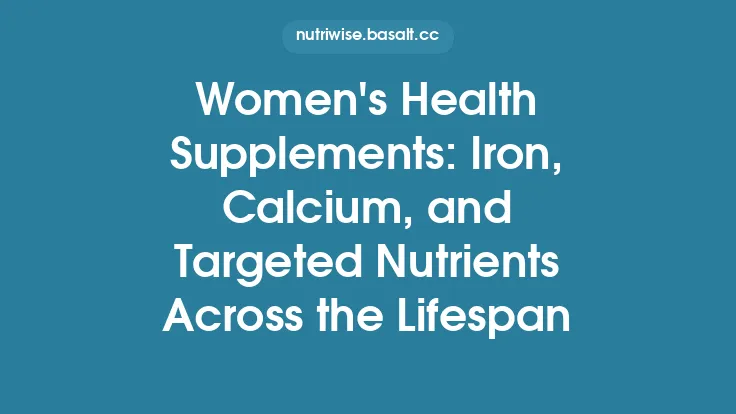Protein supplements have become a staple in many fitness‑oriented households, yet they still raise a host of practical questions that can feel overwhelming for newcomers and seasoned athletes alike. Below, we address the most common inquiries that arise when people consider adding a protein product to their routine. The answers draw on current research, regulatory guidance, and real‑world experience, aiming to give you a clear, evidence‑based roadmap for safe and effective use.
What exactly qualifies as a “protein supplement”?
A protein supplement is any product that delivers a concentrated source of protein in a form that is more convenient than whole foods. This includes powders, ready‑to‑drink (RTD) beverages, bars, gels, and even capsules. The defining characteristic is that the product’s primary macronutrient is protein, typically providing at least 15 g per serving. Unlike fortified foods, which may contain modest amounts of added protein, supplements are formulated to make a measurable contribution toward daily protein targets.
How do I know if I actually need a protein supplement?
The decision hinges on three variables:
- Total daily protein requirement – Determined by body weight, activity level, and specific goals (e.g., muscle hypertrophy, weight loss, clinical recovery). For most active adults, recommendations range from 1.2 g to 2.2 g per kilogram of body weight per day.
- Dietary protein intake – A food diary or nutrition tracking app can reveal whether you consistently meet those targets through whole foods.
- Practical constraints – Time pressure, appetite suppression, or dietary restrictions (e.g., vegetarianism) may make it difficult to hit targets without supplementation.
If you consistently fall short of your calculated requirement despite best efforts, a protein supplement can bridge the gap efficiently.
What is the safest daily dosage of protein supplement?
Safety is primarily a function of total protein intake rather than the source. Most research indicates that intakes up to 2.5 g kg⁻¹ day⁻¹ are well tolerated in healthy adults, provided there are no pre‑existing renal or hepatic conditions. For most people, a single serving (15–30 g) taken 1–3 times per day is sufficient. Exceeding 3 g per serving offers diminishing returns for muscle protein synthesis and may increase gastrointestinal discomfort.
Can protein supplements harm my kidneys or liver?
In healthy individuals, there is no robust evidence linking moderate protein supplementation to renal or hepatic dysfunction. The kidneys adapt to higher nitrogen loads by increasing glomerular filtration rate, a reversible physiological response. However, people with chronic kidney disease (CKD), severe hepatic impairment, or metabolic disorders should consult a healthcare professional before increasing protein intake, as their ability to handle nitrogenous waste is compromised.
Are there any known drug‑supplement interactions?
Protein itself is chemically inert, but many protein products contain additives (e.g., sweeteners, flavorings, vitamins, minerals) that can interact with medications:
| Additive | Potential Interaction |
|---|---|
| Calcium carbonate (often used as a buffering agent) | May reduce absorption of certain antibiotics (e.g., tetracyclines, fluoroquinolones) |
| Iron (fortified powders) | Can interfere with levothyroxine absorption |
| Caffeine (in some pre‑workout blends) | May potentiate stimulant effects of certain medications |
| Proprietary enzyme blends | Rarely, can affect the metabolism of drugs processed by the same cytochrome P450 pathways |
Always read the ingredient list and discuss any concerns with a pharmacist or physician.
How should I store my protein powder to preserve quality?
Protein powders are relatively stable, but exposure to heat, moisture, and light can accelerate oxidation and clumping:
- Temperature – Keep in a cool, dry place (ideally < 25 °C). Avoid storing near ovens, dishwashers, or direct sunlight.
- Humidity – Use airtight containers; consider a desiccant packet if the packaging does not have a built‑in seal.
- Shelf life – Most powders retain full nutritional value for 12–24 months from the date of manufacture, provided they remain unopened. Once opened, aim to consume within 6 months for optimal flavor and texture.
For RTD beverages and bars, refrigeration after opening is usually recommended, and expiration dates are more stringent (often 6–12 months).
What is the typical shelf life of protein supplements, and how can I tell if they’ve gone bad?
- Powders: Look for off‑odors (rancid, sour), discoloration, or excessive clumping. If the product tastes “stale” or has a chalky texture after mixing, it may have degraded.
- Bars/RTDs: Check for mold, unusual softness, or a sour smell. Packaging that has bulged or leaked is a red flag for microbial growth.
When in doubt, adhere to the “use‑by” date printed on the label; it reflects the manufacturer’s guarantee of potency and safety.
How do I choose between powder, ready‑to‑drink, and bar formats?
| Format | Advantages | Potential Drawbacks |
|---|---|---|
| Powder | Customizable serving size; typically highest protein per gram; cost‑effective | Requires mixing equipment; may have texture issues |
| Ready‑to‑Drink (RTD) | Convenient; portable; pre‑mixed | Higher cost per gram; often contains added sugars or preservatives |
| Bars | Convenient for on‑the‑go snacking; can provide additional carbs/fats | May contain added fibers or sugar alcohols that cause GI upset; lower protein density |
Select the format that aligns with your lifestyle, budget, and tolerance for additives.
Are there any special considerations for people with lactose intolerance or dairy allergies?
Even though many protein powders are derived from dairy (e.g., whey, casein), manufacturers often use hydrolyzed or ultrafiltrated processes that reduce lactose content to < 0.5 g per serving. However, trace amounts may still be present. For strict lactose intolerance or dairy allergy:
- Opt for plant‑based isolates (e.g., pea, rice, soy) that are naturally lactose‑free.
- Verify that the label states “lactose‑free” and “produced in a dairy‑free facility” to avoid cross‑contamination.
- Consider enzyme supplements (lactase) if you must use a dairy‑derived product.
What should I do if I experience gastrointestinal discomfort after taking a protein supplement?
Common culprits include:
- Rapid ingestion – Consuming a large dose quickly can overwhelm the digestive system. Split the serving into two smaller doses.
- Fiber or sugar alcohols – Some blends contain inulin, chicory root, or erythritol, which can cause bloating. Choose a “low‑FODMAP” or “minimal additive” product.
- Protein type – Certain individuals digest whey faster than casein; others may react to soy or pea proteins. Experiment with a different source.
- Insufficient fluid – Mix powders with at least 250 ml of water or milk; inadequate hydration can lead to thick, hard‑to‑digest mixtures.
If symptoms persist beyond a few days, discontinue use and consult a healthcare professional.
Can I “cycle” protein supplements, or is continuous use safe?
Protein supplementation does not produce tolerance or dependence in the way that stimulants or anabolic agents might. Continuous use is safe for most healthy adults, provided total protein intake stays within recommended limits. Cycling is unnecessary unless you are:
- Testing different protein sources to assess tolerance.
- Managing caloric intake for a specific phase (e.g., cutting vs. bulking) and wish to reduce overall protein temporarily.
How do I assess the cost‑effectiveness of a protein supplement?
Calculate the cost per gram of protein:
\[
\text{Cost per gram} = \frac{\text{Price of container}}{\text{Total grams of protein in container}}
\]
For example, a 2 kg tub containing 80 % protein (1600 g protein) priced at $40 yields a cost of $0.025 per gram. Compare this metric across brands and formats; powders usually offer the best value, while RTDs and bars are premium for convenience.
What certifications or quality seals should I look for?
- NSF Certified for Sport – Guarantees that the product contains what the label claims and is free from banned substances.
- Informed‑Sport – Similar to NSF, with a focus on anti‑doping compliance.
- USDA Organic – Indicates that the raw material sourcing meets organic standards (no synthetic pesticides, GMOs).
- Non‑GMO Project Verified – Confirms that the product does not contain genetically modified ingredients.
These certifications help mitigate the risk of contamination, adulteration, or misleading labeling.
Are there any environmental or sustainability concerns with protein supplements?
Yes, especially for animal‑derived proteins:
- Carbon footprint – Dairy‑based proteins generally have higher greenhouse gas emissions per gram of protein compared to most plant sources.
- Water usage – Producing whey or casein requires substantial water for dairy farming.
- Land use – Livestock feed production occupies large tracts of arable land.
If sustainability is a priority, consider plant‑based isolates (pea, soy, rice) that typically have lower environmental impact. Some brands also publish life‑cycle assessments (LCAs), which can guide eco‑conscious purchasing.
How do I know if a protein supplement is appropriate for specific populations (e.g., seniors, pregnant women, athletes)?
| Population | Key Considerations |
|---|---|
| Older adults | May benefit from higher leucine content to counteract anabolic resistance; look for supplements with ≥ 2.5 g leucine per serving. |
| Pregnant/Lactating women | Protein needs increase (≈ 1.1 g kg⁻¹ day⁻¹). Choose products free of potentially harmful additives (e.g., high levels of caffeine, certain herbal extracts). |
| Endurance athletes | May prioritize faster‑digesting proteins post‑exercise; powders mixed with carbohydrate sources can aid glycogen replenishment. |
| Strength athletes | Higher total protein (≥ 1.6 g kg⁻¹ day⁻¹) and possibly multiple servings around training sessions. |
Always consult a qualified health professional before initiating supplementation in these groups.
Can protein supplements aid in weight management, and if so, how?
Protein has a higher thermic effect than carbs or fats, meaning the body expends more energy digesting it. Additionally, protein promotes satiety by influencing gut hormones (e.g., peptide YY, GLP‑1). When incorporated into a calorie‑controlled diet, a protein supplement can:
- Preserve lean mass during caloric deficit.
- Reduce overall hunger, making adherence easier.
- Support metabolic rate by maintaining muscle tissue.
Select a low‑calorie, high‑protein powder (e.g., 20 g protein with ≤ 100 kcal) and use it as a snack or meal replacement as needed.
What are the most common misconceptions about protein supplements that are not covered elsewhere?
- “More protein always equals more muscle.” Muscle protein synthesis plateaus after ~ 0.4 g kg⁻¹ per meal; excess protein is oxidized for energy or stored as fat.
- “Protein powders are “synthetic” and unnatural.” Most powders are derived from natural sources (milk, peas, soy) and undergo filtration, not chemical synthesis.
- “All protein powders are created equal.” Processing methods, source purity, and additive profiles vary widely, influencing digestibility and allergenicity.
Understanding these nuances helps you set realistic expectations.
How can I verify that a protein supplement is not counterfeit or adulterated?
- Purchase from reputable retailers (official brand websites, authorized distributors, major health‑food chains).
- Check batch numbers and expiration dates against the manufacturer’s database (many brands provide online verification tools).
- Inspect packaging integrity – look for tamper‑evident seals, consistent branding, and high‑resolution printing.
- Read third‑party lab reports (often posted on the brand’s website) that detail amino acid profiles and contaminant screening.
If anything feels off, contact the manufacturer before consumption.
What should I do if I experience an adverse reaction?
- Stop using the product immediately.
- Document symptoms (time of onset, severity, any other foods or supplements taken).
- Seek medical attention if symptoms are severe (e.g., difficulty breathing, swelling, anaphylaxis).
- Report the incident to the FDA’s MedWatch program (or the equivalent authority in your country) and to the manufacturer. This helps improve product safety monitoring.
Are there any upcoming trends or innovations in protein supplementation I should be aware of?
- Hybrid proteins that combine animal and plant sources to optimize amino acid profiles while reducing environmental impact.
- Fermented protein isolates produced via precision fermentation (e.g., microbial‑derived whey without dairy), offering dairy‑free options with identical functional properties.
- Micro‑encapsulation technologies that protect sensitive amino acids from oxidation and improve solubility.
- Personalized nutrition platforms that use genetic and metabolic data to recommend specific protein types, dosages, and timing.
Staying informed about these developments can help you make future‑proof choices.
Bottom line
Protein supplements are a versatile tool for meeting dietary protein goals, supporting performance, and managing body composition. By understanding dosage limits, storage practices, potential interactions, and quality certifications, you can integrate them safely into your routine. Always align supplementation with your individual health status, lifestyle, and sustainability values, and consult qualified professionals when in doubt. With the right knowledge, protein supplements become a reliable ally rather than a source of confusion.





